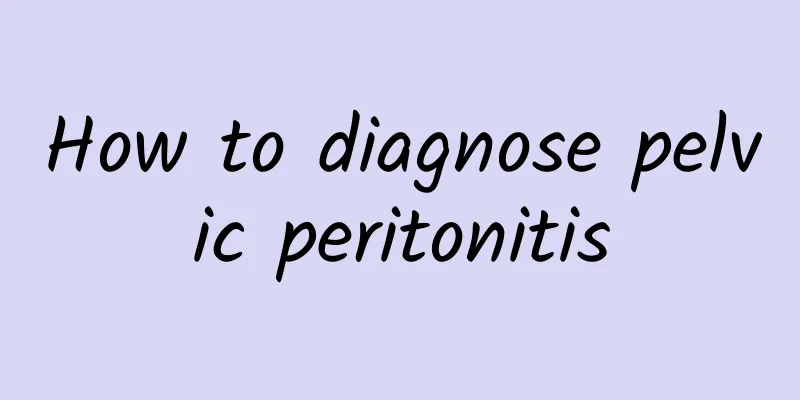What should I do if there are blood clots during menstruation that cannot be discharged?

|
What should I do if there are blood clots during menstruation that cannot be discharged? The inability to discharge menstrual blood clots is caused by cold environment, retroverted uterus, cervical adhesions and other reasons. Different causes have different treatment methods, as follows: 1. Cold environment Being in a cold environment for a long time will slow down blood circulation, slow discharge of menstrual blood in the uterus, and blood clots are prone to occur. When the blood clot is large, it cannot pass through the cervix normally, resulting in the inability to discharge menstrual blood. Stay away from cold environments and avoid eating raw, cold and greasy food. Keep your abdomen warm and drink plenty of hot water. Massage your abdomen clockwise to promote blood circulation, stimulate uterine contraction, and help the body expel blood clots. 2. Retroverted uterus If the uterus develops abnormally, it will lead to a retroverted uterus. The endometrium cannot be discharged normally after shedding and may coagulate into blood clots in the uterus, which may block the cervix and cause poor menstrual blood discharge. Patients should do appropriate activities every day to promote the activity of blood clots in the uterus and discharge them out of the body. Under the guidance of a doctor, they can also take drugs such as Yi Mu Cao Granules and Xue Fu Qu Yu Pills to promote blood circulation, remove blood stasis, and discharge menstrual blood smoothly. 3. Cervical adhesion If the cervix is adhered, the blood in the uterus cannot be discharged normally through the cervix, and it may coagulate after oxidation, and may also be accompanied by uncomfortable symptoms such as abdominal pain and swelling. When cervical adhesion occurs, sexual intercourse and vaginal douching should be avoided to prevent infection by pathogens. Once combined with infection, you can take drugs such as metronidazole tablets and cefaclor granules under the doctor's advice to remove bacteria and relieve physical discomfort. When cervical adhesion is severe, surgical methods such as cervical dilation and hysteroscopic intrauterine adhesion separation can be used to dilate the cervix, remove adhesion tissue, and restore the normal shape of the cervix. In addition to the above reasons, endocrine disorders, endometriosis, uterine fibroids and other reasons can also induce this situation, which can also be treated with Chinese medicine. If menstruation does not return to normal for a long time, you can also go to the hospital in time to avoid affecting your health. |
<<: What are multiple ovarian cysts and what are their symptoms
>>: What is the cause of uterine dysmenorrhea
Recommend
What is the difference between implantation bleeding and menstruation?
Of course, there are still big differences betwee...
I had an abortion and it caused inflammation and abnormal vaginal discharge
Inflammation and abnormal vaginal discharge after...
Can tannic acid inhibit the new coronavirus? Red wine and nuts are great too! Nutritionists recommend 6 healthy eating methods
In addition to cleaning and disinfection and wear...
Why does vaginal discharge turn black? How to prevent abnormal vaginal discharge?
Leucorrhea is a liquid secreted by women. Normal ...
How to treat cervical hypertrophy?
Cryotherapy for the treatment of cervical hypertr...
What is the normal thickness of the endometrium during ovulation?
During ovulation, the thickness of the endometriu...
You don’t need to diet to lose weight~ Golden 8-hour weight loss method, intermittent fasting is very effective
Eating less and exercising more can help you lose...
Let fat change your face! Lemonade weight loss craze is back
As the weather gets warmer, the lemon water weigh...
Subvert your imagination! The white flesh of watermelon is more nutritious than red flesh!
Eating a piece of cold watermelon can really cool...
Ten "Rainbow New Year Dishes" rich in lutein and anthocyanins, helping the whole family to develop immunity!
The Lunar New Year is coming soon. It would be gr...
Causes of cervicitis
In today's society, many women are troubled b...
Can rubbing the base of the thumb relieve menstrual pain?
Can rubbing the base of the thumb relieve menstru...
Why do early symptoms of ectopic pregnancy become more severe?
Experts say that many women are worried about hav...
Irregular menstruation and still can't get pregnant
If you have irregular menstruation and have not b...
3 common causes of amenorrhea
Amenorrhea refers to the phenomenon that women ov...









